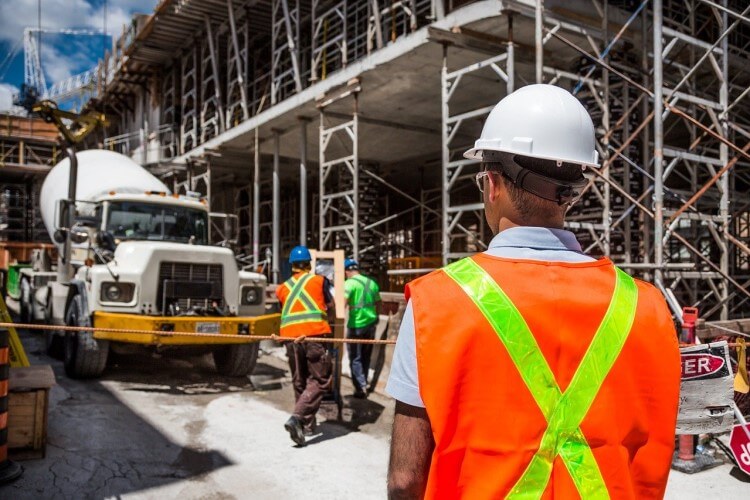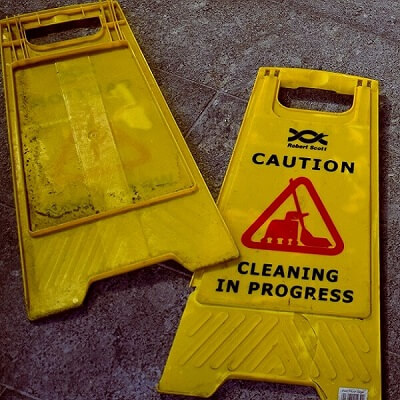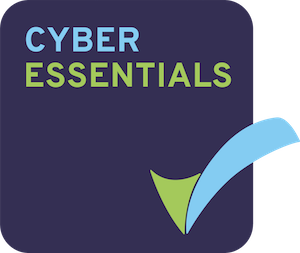When it comes to lone workers and rules surrounding lone working, many employers are likely to have questions. There is a lot of legislation to think about, and sometimes you may not know who exactly those rules apply to. This article is dedicated to answering many of the most pressing questions about lone workers. These include defining who counts as a lone worker, what hazards they tend to face, and what your responsibilities are to them.
What is a Lone Worker?
Lone workers are defined by the Health and Safety Executive (HSE) as employees “who work by themselves without close or direct supervision”. This means that the definition of a lone worker applies not just to staff operating off-site, but also to employees who may be alone in an office.
To an extent, all employees have the potential to be classified as a lone worker at some point during the working day. Retail workers may be the only member of staff on a till; healthcare workers are sometimes required to work alone in the community; delivery drivers are often facing members of the public without supervision.
Working from home also counts as lone working, as most employees will have no supervision except during meetings on Zoom or Teams. Whilst the home is generally a safe place, it is important that any policies regarding lone working also apply to remote workers.
What Jobs Involve Lone Working?
There are a wide range of job roles that involve lone working. Some are more obvious than others, but they all require protection under the law. Almost all workplaces are likely to employ lone workers at some point. Sectors include:
- Construction – Labourers, builders, and repairmen
- Healthcare – Health visitors, paramedics, nurses
- Retail – Shop workers, keyholders, security guards, cleaners
- Corporate – Office staff working from home or late
- Utilities – remote engineers, meter readers, maintenance staff
- Housing – real estate agents, housing officers, social workers
You can find some specific examples on our list of 8 Examples of Lone Workers.
Protecting Lone Workers
Under the Health and Safety at Work etc Act 1974, employers have a duty to ensure the safety of all employees. This includes lone workers, who may often require extra provisions. There are several ways in which this can be done.
Perhaps one of the most important methods is to complete risk assessments before any work is carried out. For lone workers, these risk assessments should identify whether there are any means of receiving help should an accident occur.
All staff should also receive adequate training relating to their roles. This should include familiarising them with policies relating to lone working. Employers have a responsibility to conduct relevant and thorough training.
It is also crucial that employees are equipped with suitable protective equipment. This includes high visibility jackets, steel toe-capped boots, and face masks in appropriate settings. The tools being used by staff should also be kept to a high standard to ensure employees are kept safe.
Another helpful method for keeping staff safe is to keep a log of where staff are and when. There are several systems available for monitoring employees, whether they are lone workers or not. For example, all our Lone Alarms come fitted with GPS locators.
What are the Hazards of Lone Working?
Hazards vary amongst different industries and job roles. A shop assistant is likely to face very different risks than a construction worker, for example. The top causes of workplace accidents and fatalities, however, tend to be consistent.
Lone working comes with its fair share of specific hazards. These include:
- Violence and aggression from clients or members of the public
- Tripping hazards and spillages
- Working at height on ladders, roofing, or scaffolds
- Operating of machinery and equipment
- Working with electricity, chemicals, and other harmful substances
- Manual handling and repetitive movements
- Proximity to vehicles
- Driving
It is important to recognise that hazards pose very real risks to the welfare of your employees. According to statistics released by the HSE, 123 workers were killed at work in 2021/22 and more than 65,000 injuries were reported in 2019/20. Workplace injuries and work-related illnesses also resulted in the equivalent of 38.8 million working days being lost.
The most common cause of non-fatal workplace injury is slips, trips, and falls.
Violence at Work
Unfortunately, violence and threats are a far more common occurrence than injuries. According to the violence at work statistics, there were 688,000 incidents of violence at work in 2019/20. A little under half of these incidents involved assaults, and over a third of these assaults resulted in injury.
The same statistics highlighted that certain occupations are more likely to face assaults and threats at work. Protective service employees, for example, face the highest risk of assaults and threats while working. There is an 8.4% chance that police officers will be assaulted or threatened, whereas the national average is 1.4%.
Lone workers are particularly vulnerable to violence and aggression at work. This is often because they lack colleagues to intervene or call for help.
Figures from 2018 indicate that up to 150 lone workers are attacked every day in the UK.
The Risks of Lone Working
Many of the risks faced by lone workers are the same as those experienced by other workers. However, due to the nature of lone working they tend to be more vulnerable. This is because, if they do encounter an emergency, there is not usually anyone with them to provide help or call for assistance.
Lone workers may also be considered easier targets for violence or theft. In some cases, a lone worker may put themselves at risk by taking on more than they can handle. For example, they may try to lift a load that is beyond their individual capabilities.
Types of Risks
The three main risks associated with lone working are people, ill health, and environment.
People Risk
As has been mentioned above, lone workers are at a higher risk of violence and aggression. They are often seen as easier targets. This risk may be connected to their line of work, such as working with vulnerable members of the public, or working with large amounts of money. Jobs facing these risks include social and housing workers, retail, bar, and hospitality staff, and security guards.
Ill Health
Working alone makes it harder for employees to get support if they feel unwell. This can be especially hazardous in medical emergencies, such as fainting or having a heart attack. Lone workers lack the supervision and support of other colleagues, and in many cases cannot rely on public intervention.
Environmental Risk
Workplace hazards such as slips, trips, and falls, heavy lifting, and electrocution are prominent hazards for lone workers. Whilst the likelihood of the accident is not automatically increased by working alone, it is harder for workers to receive immediate assistance or medical support should an accident occur.
Specific environments are also more likely to increase risk. Lone workers in community settings face the dangers of disgruntled clients and customers, which can be exacerbated in cramped conditions. Though public settings may offer some reassurance that help is nearby in an emergency, they also put lone workers near potentially dangerous individuals.
The construction industry presents heightened risks to employees. It reported the most workplace fatalities in 2019/20. Noise and obstructions can mean that workers end up isolated from their colleagues; machinery and tools can cause harm and working at height presents several hazards of its own.
Working at night also brings an increase in risks. This is especially true for lone workers who may encounter intoxicated individuals. Thieves may target sites at night when there are less people present, putting security workers at risk, and there are likely to be more drink- or drug-related incidents.
Driving is also a risk, and many lone working roles require employees to travel between jobs. A major risk is dangerous and drink driving. Statistics show that there are an average of 3,551 serious injuries every year because of drink driving, and there were 1,760 fatalities on British roads in 2022.
Find out more about lone working hazards.
Lone Worker Legislation in the UK
As with all employees, lone workers are protected by the Health and Safety at Work etc Act 1974, which outlines the responsibilities of the employer. They must also adhere to the Management of Health and Safety at Work Regulations 1999. Employers must implement policies and procedures to reduce risks so far as is reasonably practicable. These include risk assessments, safety procedures, and the appointment of competent supervisors and management. Training appropriate to the job roles should also be provided.
Lone worker legislation is regulated by the Health and Safety Executive (HSE). They provide guidance on keeping lone workers safe, as well as supporting businesses with health and safety laws.
Is Lone Working Legal?
It is perfectly legal for employees to work alone. Employers, however, are responsible for the protection of their lone workers. They must ensure that systems are in place that keep lone workers safe.
HSE guidance states that “it will often be safe to work alone. However, the law requires you to think about and deal with any health and safety risks before people are allowed to do so.”
Employers’ Responsibilities
At its core, all lone working legislation imposes a duty of care upon the employer. This duty of care requires that employers identify, assess, control, and monitor the workplace to ensure risks are minimised as far as is practicable.
What this means is that health and safety risks must be addressed before an employee can work alone. This applies to anyone who is contracted to work for you, including self-employed contractors.
Risks to lone workers can be reduced by conducting thorough risk assessments. Employees should be encouraged to familiarise themselves with the contents of these risk assessments, as well as with the company’s health and safety policies. Training and supervisions should be carried out where appropriate to ensure staff are always conscious of their own wellbeing, and they should also feel able to bring health and safety matters to the attention of management.
Your lone workers, especially, should understand your business’s lone working policy. They should know what safety devices are in use and how to use them, and what to do in case of an emergency.
Penalties
Failure to implement and adhere to health and safety guidance is a serious offence. Non-compliance may lead to serious penalties.
Fines can reach into the millions if you are discovered to have breached health and safety legislation. These breaches can include a worker being exposed to a risk that could result in injury; companies can now be prosecuted before an incident occurs.
Employers who are aware of health and safety breaches, and who have not taken action to rectify the situation, can face between 6 and 18 months of imprisonment.
Beyond the legal ramifications of these penalties, a business is also likely to find its trade damaged. A poor health and safety record has a negative impact on reputation, and in some cases could result in the business being forced to close.
Learn more about workplace responsibilities.

Who Can Work Alone?
Lone working can often prove unavoidable. As such, all workers can work alone provided a risk assessment has determined it is safe to do so. Often, a lone working role can be made safe with the application of extra procedures and safety systems.
However, certain high-risk roles should not be given to lone workers. Similarly, certain members of the workforce may not be suitable to perform lone working roles. Many pieces of machinery, for example, require multiple workers to operate them; this would not be a suitable role for a lone worker. Likewise, some establishments are likely to attract a rowdier form of customer. These premises should not be attended by a lone worker.
Medical Conditions
Whether or not an individual with a medical condition can be given a lone worker role is dependent on the condition itself, as well as what role they would be performing. Considerations for medical conditions must, therefore, be made within your risk assessments.
Consult with employees and, where possible, their doctors to determine their suitability for lone working. Lone working may cause unnecessary physical and/or mental strain on employees with pre-existing conditions, so consider how these may affect your staff.
Apprentices
It is permitted for apprentices to operate as lone workers. Employers have the same responsibilities to their apprentices as they do to any other worker. Before an apprentice is given any lone working roles, suitable and adequate risk assessments must be completed.
When is Lone Working Not Allowed?
Some roles and situations pose more risks to lone workers than others. In some circumstances, it may be better not to allow lone working at all. Certain jobs, such as mental health care workers, are not permitted to work alone. They must operate in pairs due to the dangers of their job. Your risk assessments should highlight whether it is safe for lone working to be carried out, and which staff are not permitted to work alone. Allowing lone working in these cases could be considered a breach of the employer’s duty of care.
Risk Assessments for Lone Workers
Under health and safety laws, risk assessments are necessary for the wellbeing of workers. They also help employers adhere to their duty of care. Lone workers, especially, face risks on a daily basis, and these need to be addressed in risk assessments.
Lone Worker Risk Assessments
A lone worker risk assessment should identify and assess the risks relating to a job role. An employer must consider what hazards the lone worker is likely to face. These may relate to the environment they are working in, the nature of the work itself, or the people they are likely to encounter. By identifying these hazards, you will be able to assess how risks can be minimised.
Dynamic Risk Assessments
Whilst not a piece of paperwork, a dynamic risk assessment is an important part of any job. All staff should be able to assess risks on the spot to ensure their own safety – and that of anyone they may be working with.
Do I Need a Lone Working Risk Assessment?
Risk assessments are a legal requirement under the Health and Safety at Work etc. Act. This is especially important for lone workers, and it is recommended that your risk assessments are part of your Lone Worker Policy.
How to Create a Lone Worker Risk Assessment
There are several things that should be included in a lone working risk assessment. These include:
- The hazards that have been identified
- Who might be harmed and in what manner
- The procedures that have been implemented to reduce the likelihood of harm
- What actions will be taken to further reduce these risks
Paperwork should also include information on who performed the risk assessment and when, due dates for actions to be completed, and when a follow-up review should be completed.
Learn more about risk assessments.
Lone Working Policies
Your company should have a lone working policy in place to help safeguard lone workers. This document acts as guidance for staff, outlining rules relating to lone working and making employees aware of the risks they may face.
What is a Lone Working Policy?
A lone working policy is an official document that highlights the responsibilities of the employer to their lone workers, and what employees are expected to do when working alone. The policy will outline what actions should be taken in an emergency, what steps should be taken to reduce risks, and what equipment lone workers should be using as part of their role.
The lone working policy will also include any risk assessments that apply to lone workers in the company.
Tips for Creating a Lone Working Policy
Your lone working policy needs to cover a lot of information. This can make it seem like quite the undertaking. Every company will have a unique policy, too, as it must consider the needs of your staff and the specific risks of the jobs they are expected to perform. Fortunately, you can make it easier for yourself by considering these key tips:
- Keep it simple – Ensure your lone workers can understand and follow the policy
- Update regularly – Whenever new training or risk assessments are completed, implement them into the lone working policy
- Be direct – Get straight to the point in the wording of your document, making it clear what staff are expected to do
You can find more information on writing a lone working policy in our helpful guide.
Keeping Your Lone Workers Safe
We all want to keep our employees safe. It is a legal and moral responsibility to ensure they are protected from harm and have the means to call for help when necessary.
As well as providing suitable training and systems of work, there are a number of monitoring systems available to companies. These can help provide extra peace of mind to staff who are working alone and help you to keep them safe.
Amongst these devices are lone alarms, which allow lone workers to call for help at the press of a button. These robust devices are lightweight and resistant to dust and water, making them ideal for various jobs. Furthermore, they come fitted with GPS locators and fall detectors, ensuring that your employees can receive help no matter where they are.
By pressing the button, the lone worker is put in touch with a 24/7 monitoring centre. The professional team then assess the situation by speaking to the worker through a loudspeaker. An alert is sent to emergency contacts and, where necessary, the emergency services. If the lone alarm is activated and the employee does not respond, then the emergency services will be contacted immediately.
Lone alarms are a fantastic means of safeguarding lone workers. If you would like to learn more, you can check out our Features page. Alternatively, get in touch with our helpful team on 0800 03 08 222 if you have any questions, or to order today.
Check out our post about protecting lone workers.
Editor’s Note: This article was updated on 6th December 2023 to reflect current information.












